The Fundamentals of Making Omelettes
I have been on an omelette kick lately. I tend to do this. I'll eat food in waves. One part of the year it's all about soups and curries. Then, I'm turning all of my leftovers into nachos and burritos. Somewhere in between I'll throw in "salads" that are predominantly just seafood with tiny bits of lettuce. For whatever reason, though, I've been making omelettes pretty much nonstop over the last couple of weeks. I did just move and moving can be a great way to mix things up. So, maybe it's a fitting change to my culinary routine. For better or worse, I am absolutely in full on omelette mode. There are some fundamentals of making omelettes, though, that might not be all that straightforward and really do make a huge difference in the way that omelettes turn out!
I know that I spell "omelettes" the British way, instead of "omelets" the American way. As much as I want to say that, if you have to choose between the American and the British way? The choice is clear. I don't go around writing "colour," instead of "color." So, I really suspect that it's because I went to a French American school in kindergarten and really enjoyed the words that work for both! (Also, the French word for "color" is "couleur"). But spell it however you want!
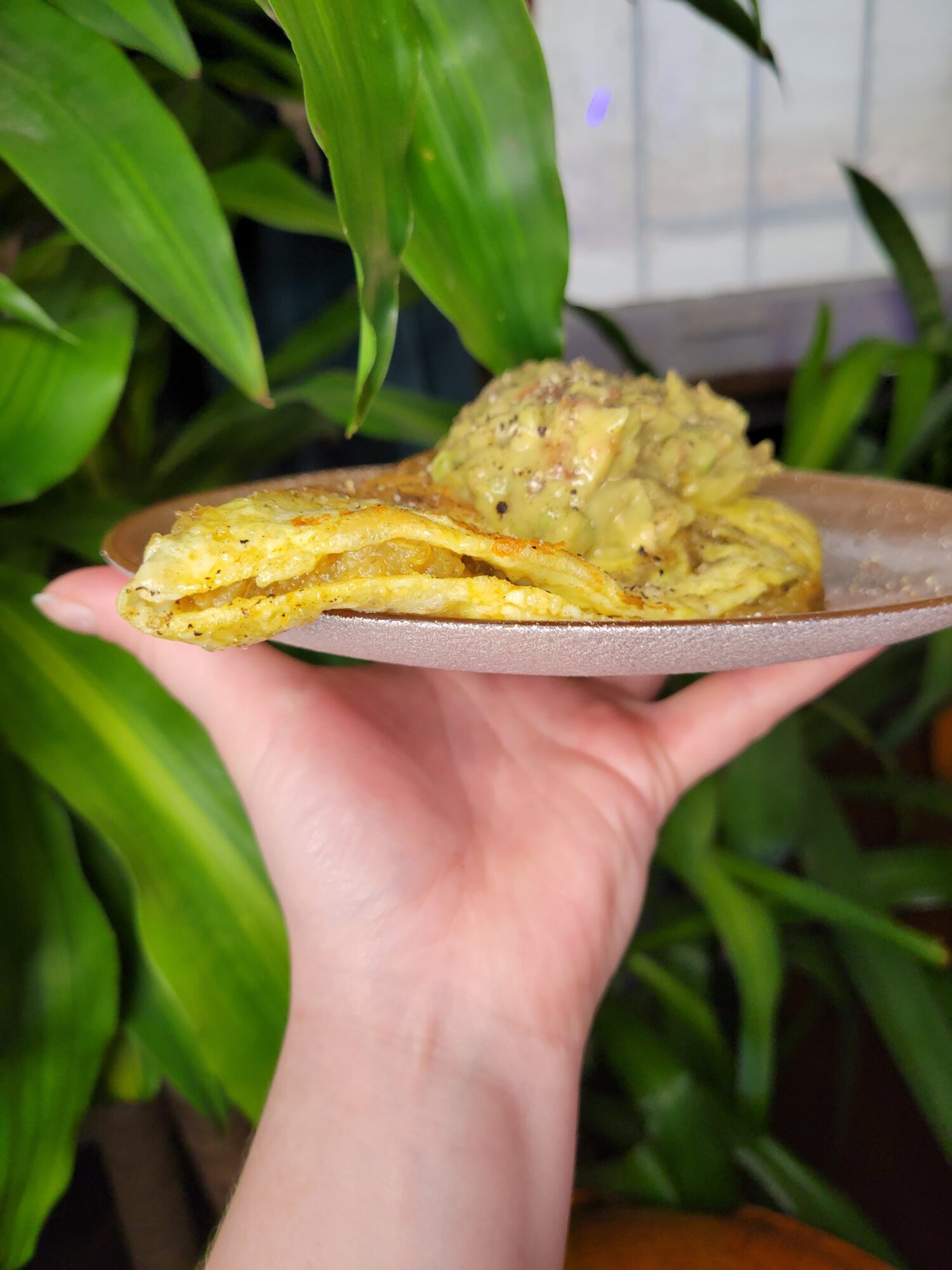
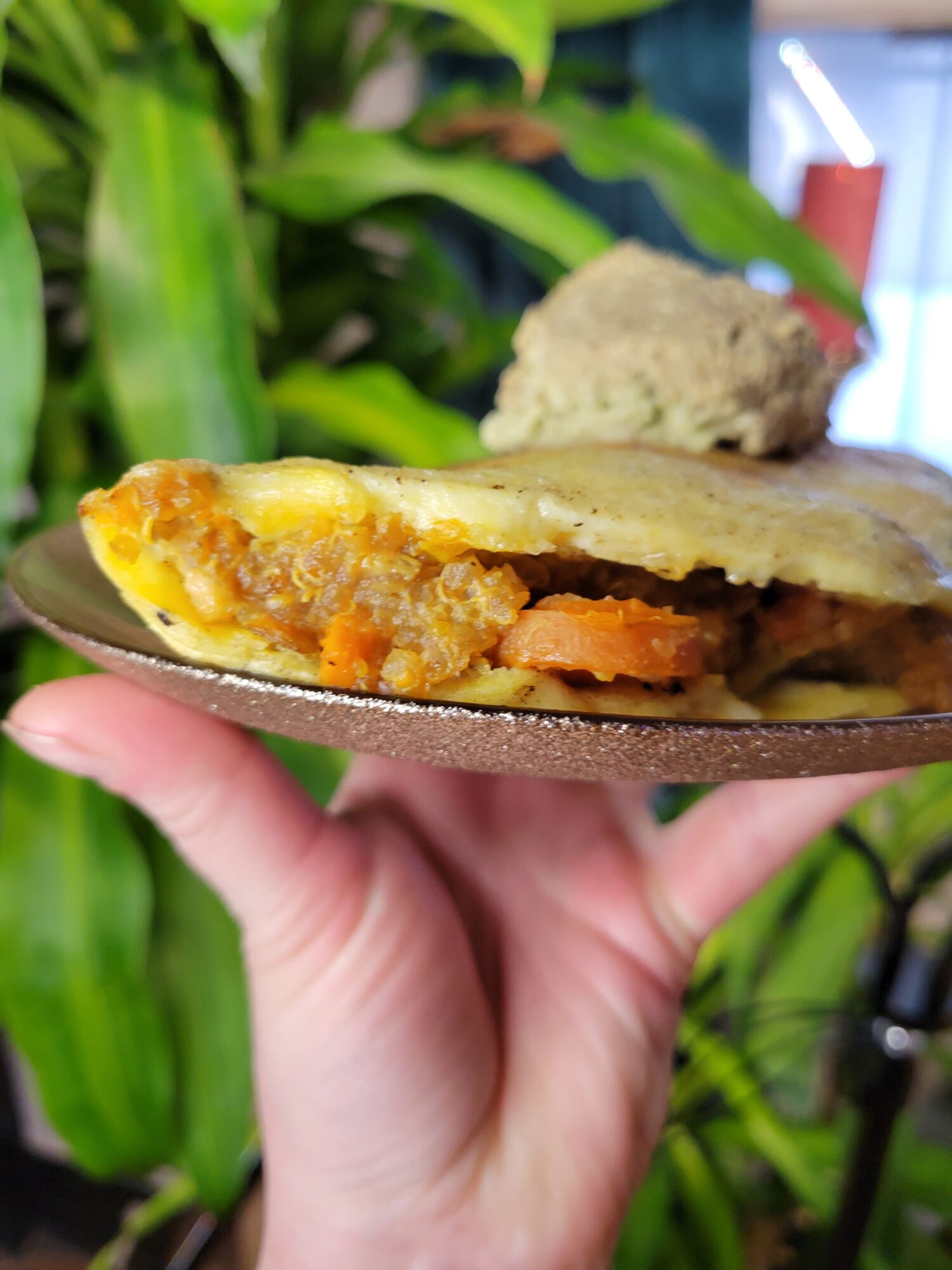
Aren't Eggs Bad for You?
Every time I talk about eggs someone inevitably tries to say that eggs are unhealthy. Or they stick their noses up and say that eggs give you high cholesterol. Some people just scoff at eggs and prefer a bagel or a croissant or cereal. Maybe with a hefty side of bacon, hash browns, and chocolate chip pancakes.
It is true that eggs contain a relatively high amount of cholesterol and have been linked to heart disease and diabetes. However, a lot of these studies don't take into account that eggs have naturally occurring cholesterol, rather than the cholesterol caused by foods that are high in trans fats and saturated fats (Mayo Clinic, Eggs: Are they good or bad for my cholesterol?). They also don't take into account what the eggs are cooked in and whether that's butter, margarine, lard, canola oil, or olive oil.
If you've just made a heaping plate of bacon and then fry an egg in the fat leftover in the pan and then add copious amounts of additional salt? Then, yes, absolutely, there's an argument to be made that those eggs are likely going to increase your chances of high cholesterol and heart disease. An egg McMuffin from the drive through? Likely in the same category. Even croissants are predominantly butter and processed flour. A single bowl of cereal contains more sugar than I likely consume in an entire week. And bagels are really just super condensed forms of bread with about 3.15 slices of bread in the average plain bagel, before the cream cheese (Insider, Here's how many slices of bread are actually in a single bagel).

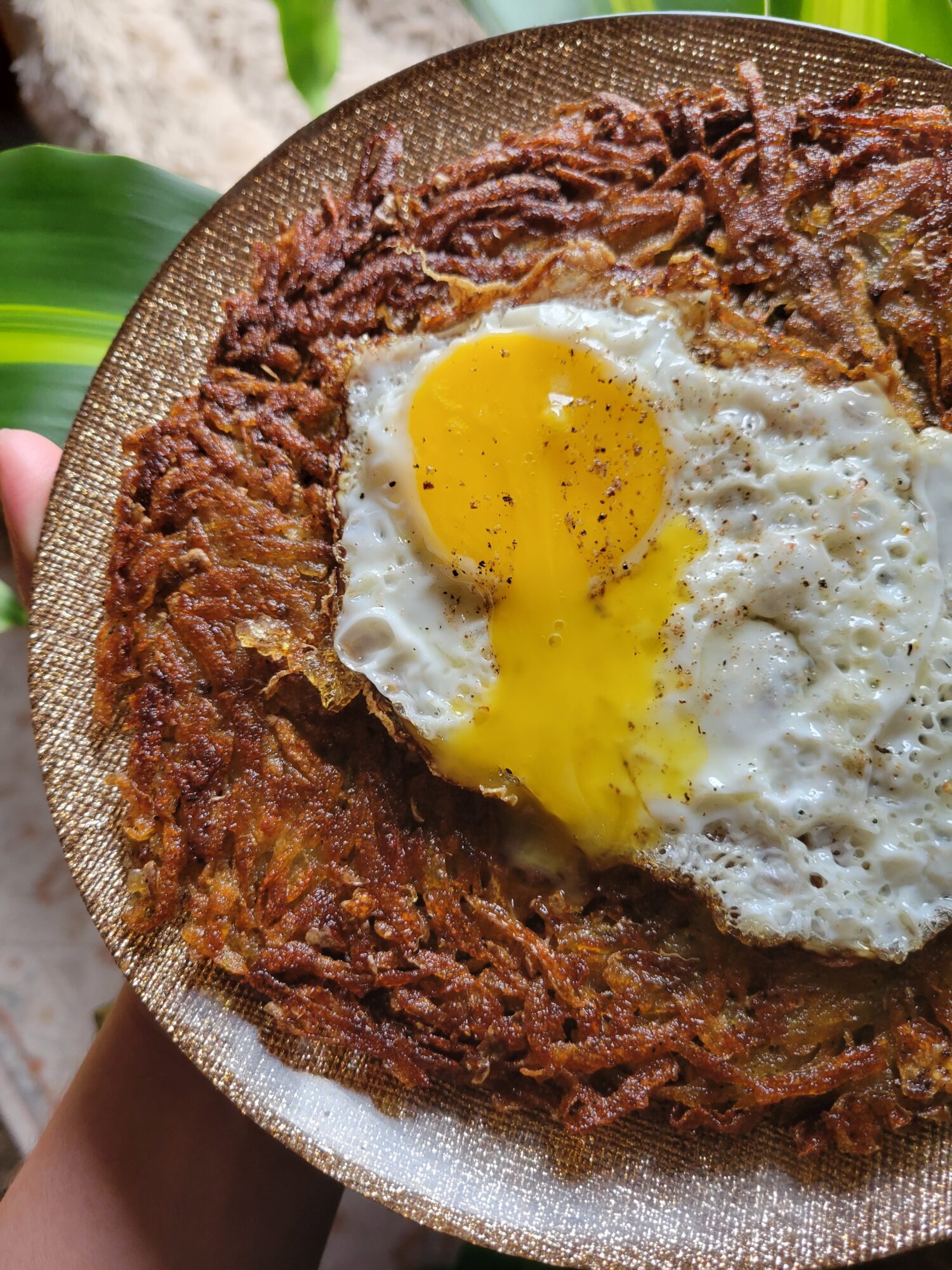
My Philosophy on Eggs
If you have a medical condition that prohibits the consumption of eggs or if eggs just really aren't your thing? Absolutely, avoid eggs.
But to try and make the claim that eggs are an unhealthy breakfast food? It depends much more on what you're pairing the eggs with than the eggs themselves.
Comparatively speaking, an omelette is on the lower end of foods that I'm personally worried about. Hash Browns are essentially slowly deep fried miniature French fries. Will I eat them absolutely every chance that I get? Oh absolutely! Will they increase my cholesterol and risk for heart disease? I'm going to go out on a limb here and say yes. Am I going to call eggs the dirty little secret ruining my diet? No. I have much worse splurge foods than a 3 egg omelette cooked in olive oil.
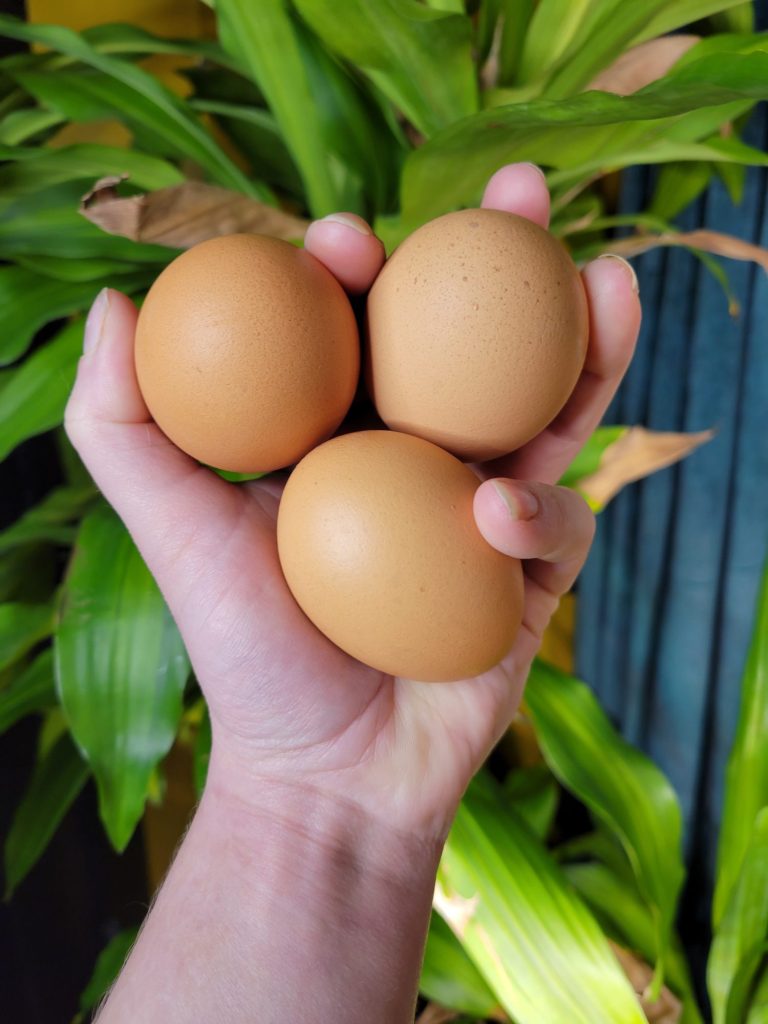
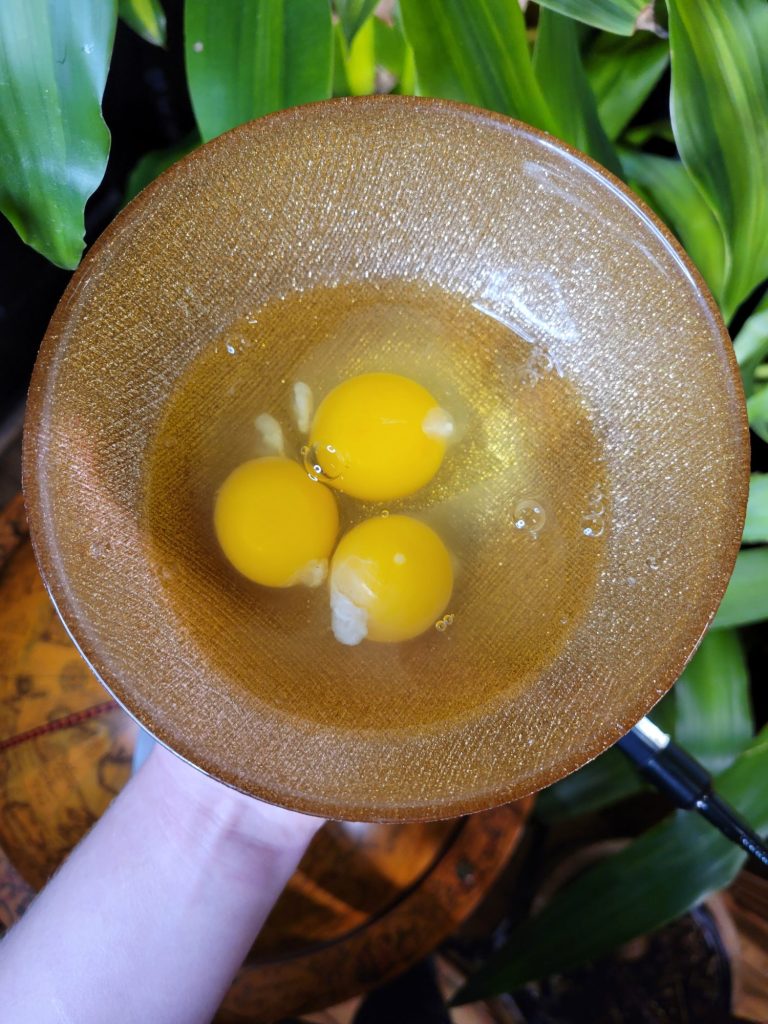
Do You Need Milk/ Cream/ Water & Salt/ Pepper in the Eggs?
Now that we've gotten past the are they or aren't they a "health" food conundrum, really my most controversial egg stance is that you:
DO NOT add ABSOLUTELY ANYTHING to the eggs AT ALL.
I must admit that I grew up up doing this backwards as well. I always watered down my eggs. If it was a special occasion or I was feeling fancy that morning? I'd even mix in a bit of milk or cream. I'd probably even wager to say that this is what most people do with their eggs, be it scrambled or in omelette form. However, this is entirely unnecessary! The idea here is that liquid will make eggs fluffier. But what this really ends up doing is diluting the flavor of the egg and making them more watery. The key to fluffiness is whisking vigorously and getting enough air into the eggs.
What adding milk, cream, or water really does is make the eggs more of a liquid than a solid. This both decreases the flavor of the egg and increases the chances that they're going to be thin and flat. So, I know that it sounds contrary to absolutely everything that you've been taught about eggs! But refrain from adding in extra liquids. It dilutes the flavor and you're not baking a cake or making a quiche here.
Another trick to making eggs is not adding spices ahead of time. Pre-salting eggs will break them down and make them watery. Adding too much pepper can also dye the eggs grey. So, it’s always better season later on or after the cooking process. So, put down the salt, pepper, and other seasonings! These are far more flavorful and appealing when you add them after the eggs are cooked.
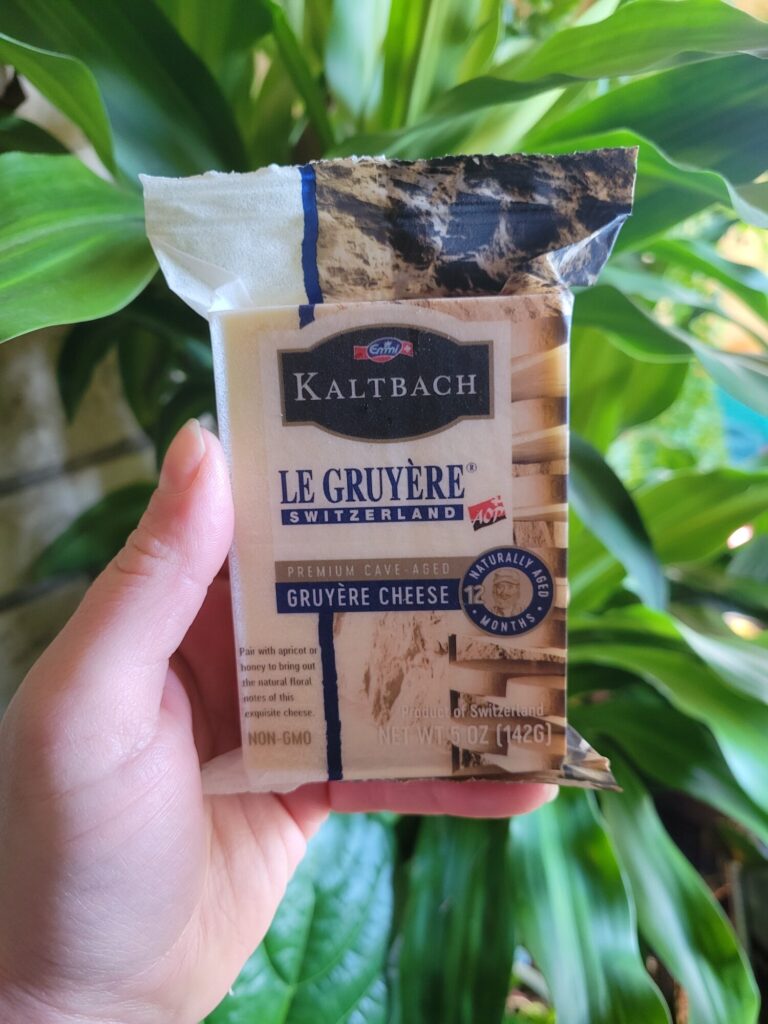

When to Add Cheese
Now, I did just say that you shouldn't add water, milk, or cream to the eggs. But what about cheese? Cheese is an absolutely classic omelette topping and I do like to splurge on a good cheese omelette sometimes.
The problem with cheese is that it combines with the eggs and makes them more difficult to cook. The natural oil in cheese combines with the eggs and prevents them from setting properly. This will increase the amount of time that the eggs take to cook and can lead to them cooking too quickly on the underside, while still being runny on the top. Or taking too long to cook and getting tough or even drying out on the bottom.
All is not lost, though! There is a simple trick to adding cheese to eggs. You just wait until the eggs have already begun to set and then sprinkle cheese on top. You can put cheese on after the eggs have completely cooked and are on the plate. Or, you can simply let the egg set enough that it isn't liquid to the touch and then grate cheese on top and let continue to cook until melted perfection.
Putting the cheese on afterwards will result in a more pronounced fresh cheese flavor. This works particularly well with harder cheeses, like parmesan, which wouldn't necessarily melt well on eggs in the first place. For softer cheeses like cheddar or gruyère? I'm adding them in during the cooking process to melt into that ooey gooey cheese that we know and love.


Additional Omelette Toppings
For any other topping that you want to put in your eggs? You can add the rest of the toppings at any point during the cooking process.
I will start out making an omelette by preheating a cast iron skillet on medium or medium-low heat. Then, I will scrambling 3 eggs in a small bowl with a fork (or whisk, if you're feeling fancy). Pour the eggs into the preheated skillet. Add the toppings. And then put on the lid until the eggs are set. After the point where the eggs are no longer runny, that's the time to add cheese.
This means that any time between adding the eggs to the skillet and serving the omelette? Is a perfectly fine time to add toppings to the eggs!
I'll ordinarily do this right away or within the first minute of adding the eggs to the skillet. However, you can add the toppings after the cheese so that there's a layer of cheese in between the eggs and the toppings.
You can also add the toppings after the omelette is off of the stove. I oftentimes do this with lettuce, avocado, green onions, and any other ingredients that I don't want cooked, browned, or wilted in the process. A lot of the times I'll add Guacamole or Avocado Dip on top after the omelette has already cooked.
Although this is all a matter of personal preference. Really, you can add whatever you want to an omelette! Just make sure to preheat the skillet and pour the eggs into the skillet first. Otherwise, the toppings can poke through the eggs and then you don't get that nice clean omelette shell. But this should form immediately and toppings can be added pretty much immediately afterwards at any point throughout the process.
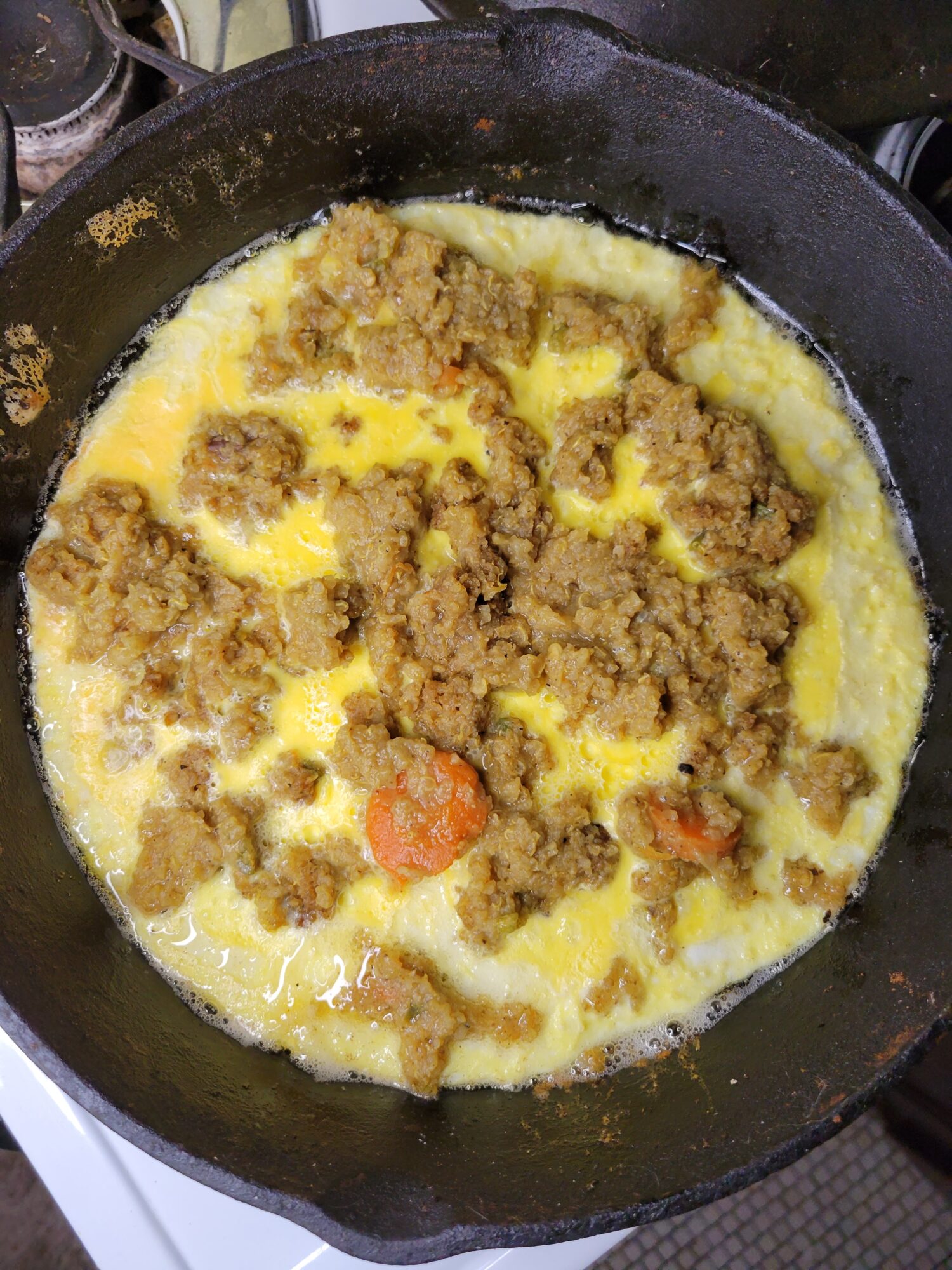
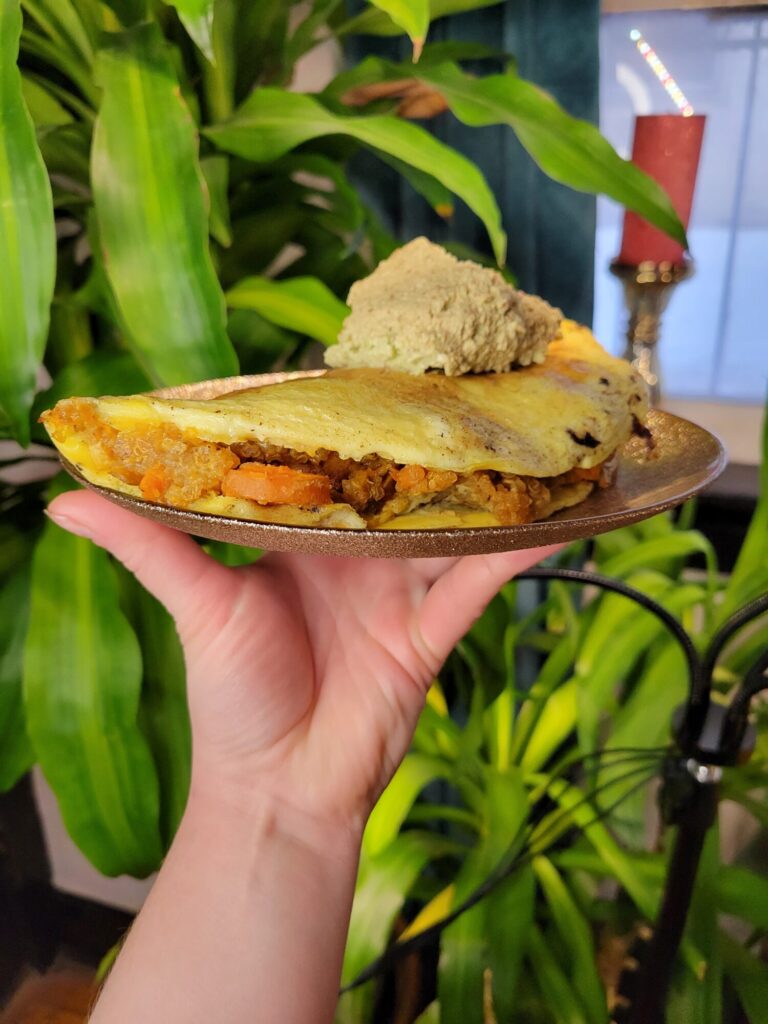
How Many Eggs Do You Need? (And Why Are All of Your Recipes for 2 Servings??)
This is a two-part question. For starters, all of my omelettes consist of 3 eggs and are fit for 2 servings. This might sound like an odd thing to do because I live alone. So, unless the cats are joining in, it would sound counterintuitive for me to be making omelettes for two.
One thing about omelettes that can be easy to overlook is that you don't determine the size of your omelette. The size of your skillet does.
This is because omelettes will fill your skillet. Whisked eggs are a liquid. They will spread out and fill every part of the skillet. No amount of will power or spatula method is going to change this. These aren't scrambled eggs, after all. Your omelette will be the size of your pan. I cook almost all of my eggs in an 8-inch cast iron skillet.
Now, you don't have to use cast iron and you can use a different size pan. However, you do have to use as many eggs as it takes to fill the skillet. For a smaller 4 or 6-inch skillet, you might be able to get away with 2 eggs and be able to make a single serving omelette. However, I don't own a skillet that size. And, if you try and put too few eggs in a larger skillet? The omelette is going to be too thin, difficult to flip, and may even break under the weight of the toppings.
If you add too many eggs to a smaller skillet, you're going to have a similar, but opposite problem. Where, instead of the eggs being too thin, they're going to be too thick. A too thick omelette can also have problems flipping and can break under the weight of the omelette.
This means that it's the size of the pan that determines the amount of eggs that you need to use for an omelette. Although I've never gotten out a ruler and measured it? Ideally, I'd say that you're looking for about 1/4-inch eggs.


How Do You Flip An Omelette?
This is a legitimate question. Omelettes aren't actually the easiest thing to flip. I oftentimes find myself staring at the pan thinking that this is absolutely not going to go well. Every time I see someone toss an omelette up in the air and perfectly catch it back on the skillet? I chuckle a little bit inside envisioning how many times that they got egg on the floor in order to master that particular skill. Personally, I never flip omelettes this way. Especially if I've packed them a little bit full. It's far easier and far less of a mess if you fail to flip an omelette with a spatula.
There are a couple of ways to set yourself up for a perfect omelette flip. For starters, make sure that your pan is adequately greased. I use a well-seasoned cast iron pan that I can just plop eggs into without worrying about them sticking. Although, any pan adequately greased with butter or oil will also work.
When it comes to actually flipping the omelette, I use a rather large metal spatula. These are thin, but strong and wide enough to hold up the omelette without it breaking. The biggest problem with omelettes is that they can break apart when you flip it. So, the key is to start with the largest amount of surface area that you can and just flop one side onto the other. There are large, flat plastic spatulas if you don't have cast iron pans or metal-safe skillets. But avoid the thicker bamboo and silicone varieties.
All else being equal, the key really is to commit. Don't think twice about what you're doing. Trust yourself and your ability to flip the omelette. This really is a go blindly in with confidence and fake it until you make it kind of thing.

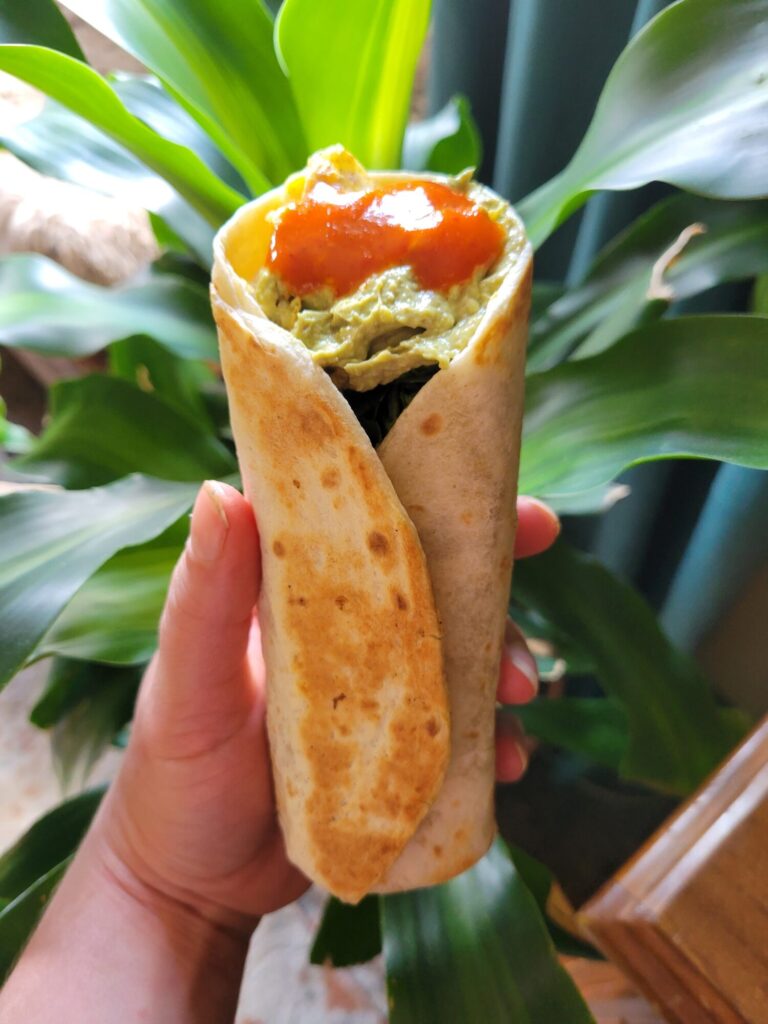
Can Omelettes Be Reheated?
I routinely make a larger omelette than I can actually eat in one sitting! This might sound like a problem because eggs aren't particularly easy to re-heat. They cannot be microwaved. Uncooked eggs can explode and even already cooked eggs have a tendency to overheat on the outside, while being cold on the inside, and still can also explode! So, step away from the microwave. It is not the fastest, easiest, or more efficient method of reheating eggs.
Generally speaking I would also not recommend reheating eggs. Eggs have quite a finicky cooking point. Overcooked eggs tend to be hard and rubbery. After they set, eggs are also fairly resistant to just about anything. So, generally speaking, I'm not going to recommend reheating eggs. Personally, I'd rather eat a quiche chilled or at room temperature than attempt to reheat it again. Although that sounds much less appetizing for omelettes!
So, yes, omelettes can be reheated. What I tend to do is put them in a skillet over low heat with the lid on until they're heated throughout. I've also thrown them into an air fryer for about 5 minutes at 400 degrees Fahrenheit. Omelettes are also fun chopped up cold and put on a salad. I've even sprinkled them in nachos and added copious amounts more cheese!
So, don't be afraid to get creative here. An already cooked omelette is much like already cooked scrambled eggs. I'd recommend turning them into another meal more than reheating them. Although it is possible!
Variations of Omelettes
The sky is the limit for making omelettes. Personally, I like to take all of my leftovers and toss them into some nice, pillowy eggs. Although setting out to make omelettes is also a perfectly fun endeavor!
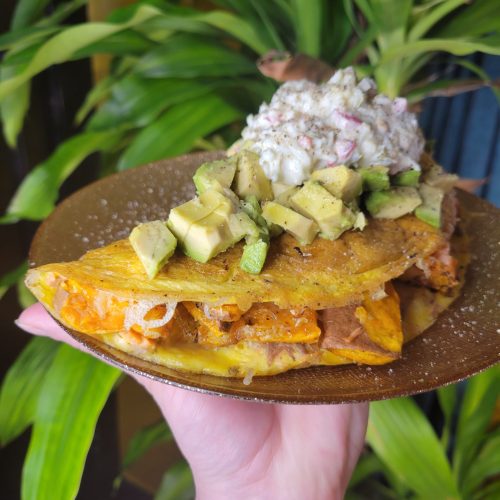
The Fundamentals of Making Omelette
Equipment
- Skillet w/ Lid
Ingredients
- 3 eggs whisked
Instructions
- Preheat a skillet on medium with a splash of olive oil.I use a pretty well seasoned cast iron pan to cook eggs, so I don't add any more than a spritz of oil. You may need upwards of a teaspoon for other types of pans, though.Use just enough so that your eggs don't stick.
- Meanwhile, crack eggs into a bowl and whisk until fluffy.
- Add eggs to the pan and reduce heat to low.It should sizzle a bit when you add the eggs, but shouldn't immediately deep fry. If it cooks too quickly, remove from heat and gradually reheat until low again.
- Add toppings evenly across the eggs and add the lid.
- Cook covered until barely set, about 5-10 minutes.The goal is to achieve a golden brown on the bottom of the eggs, cooked through the center, while still slightly runny on thee top. Depending on your stove and type of skillet, you may need to turn the temperature down if they're cooking too quickly or up if they're taking too long.
- With a large spatula, gently fold one half of the omelette over to make a half circle.If it wasn't entirely set, some egg may drain out as you do this. If that happens, you can add the lid and continue to cook until set. Flip to the other side if it begins to brown too much.
- Add any additional uncooked toppings and sprinkle with a dash of salt and pepper.
- Serve immediately.
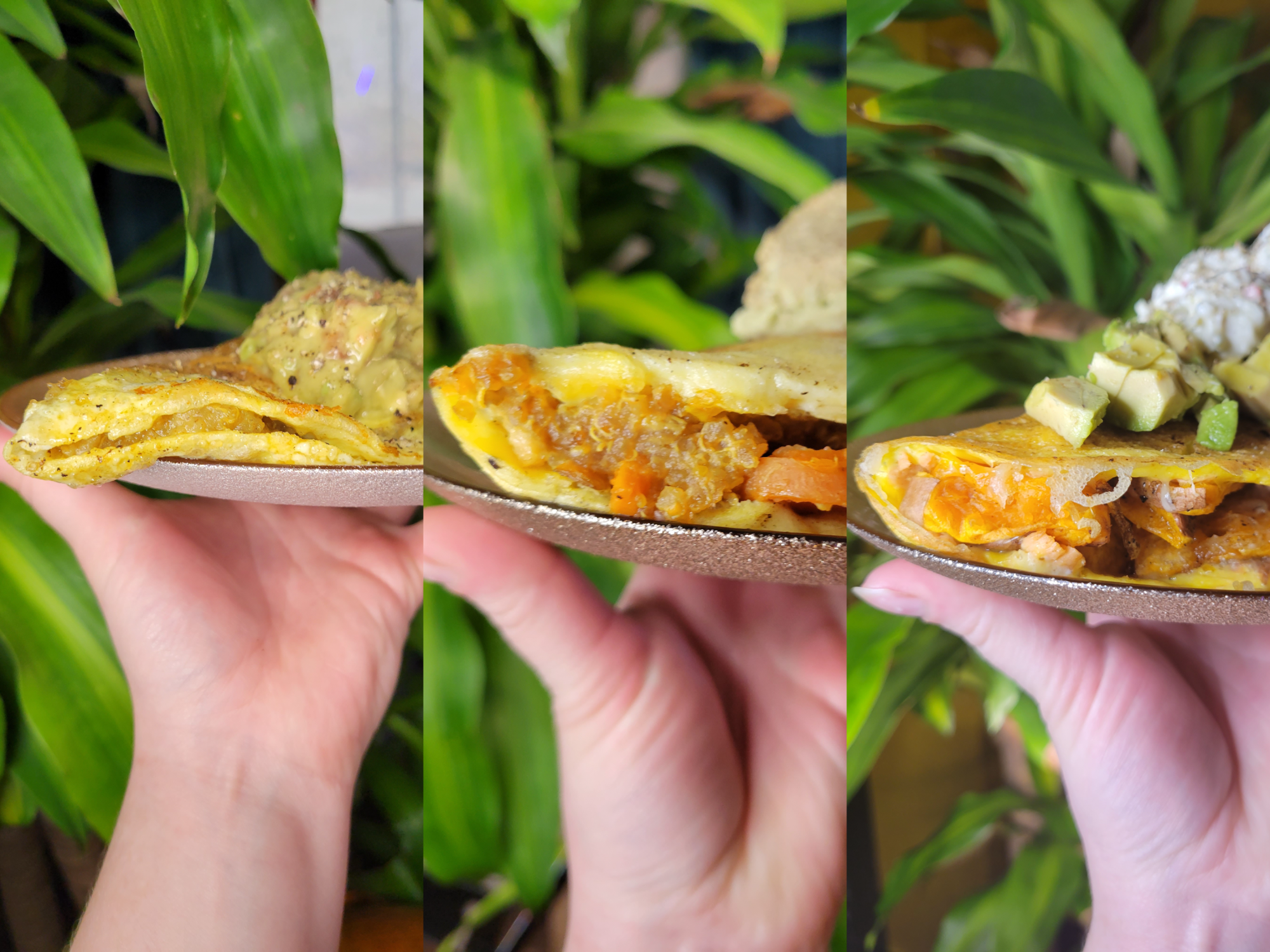
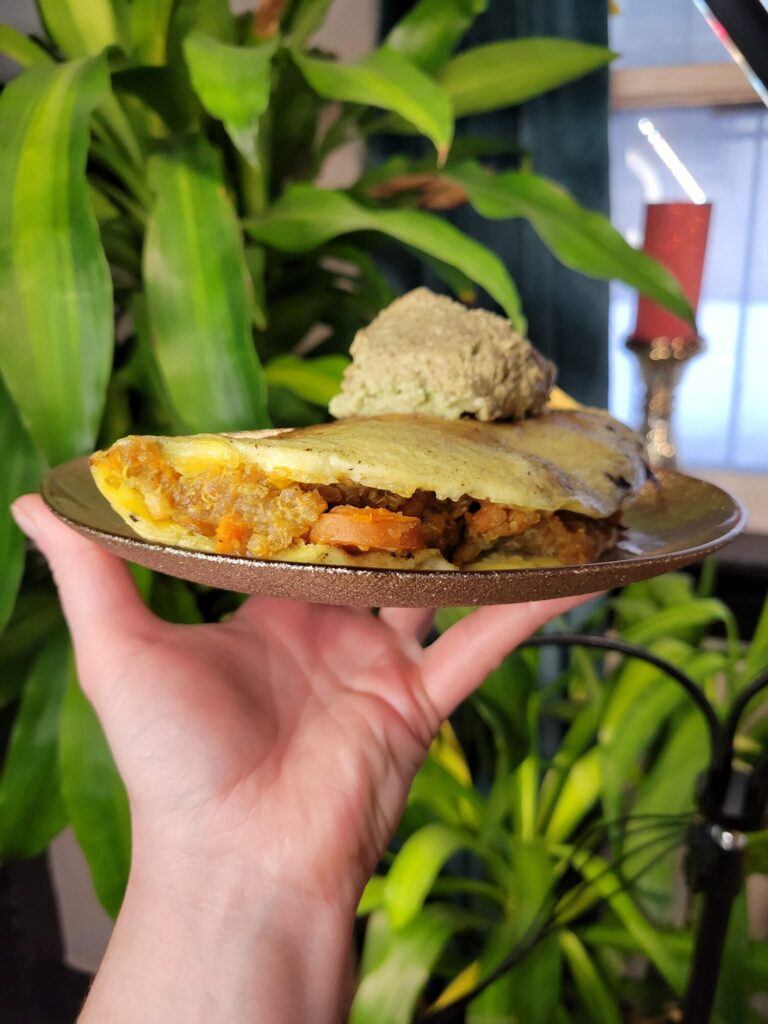
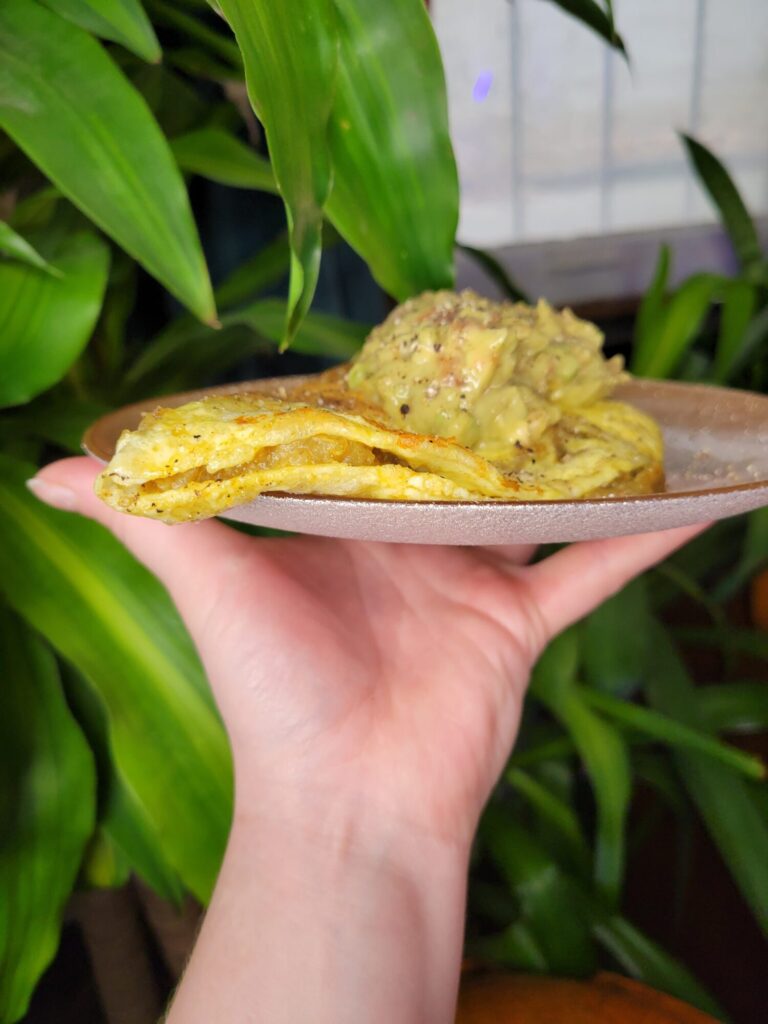



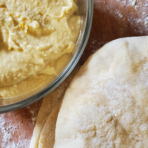


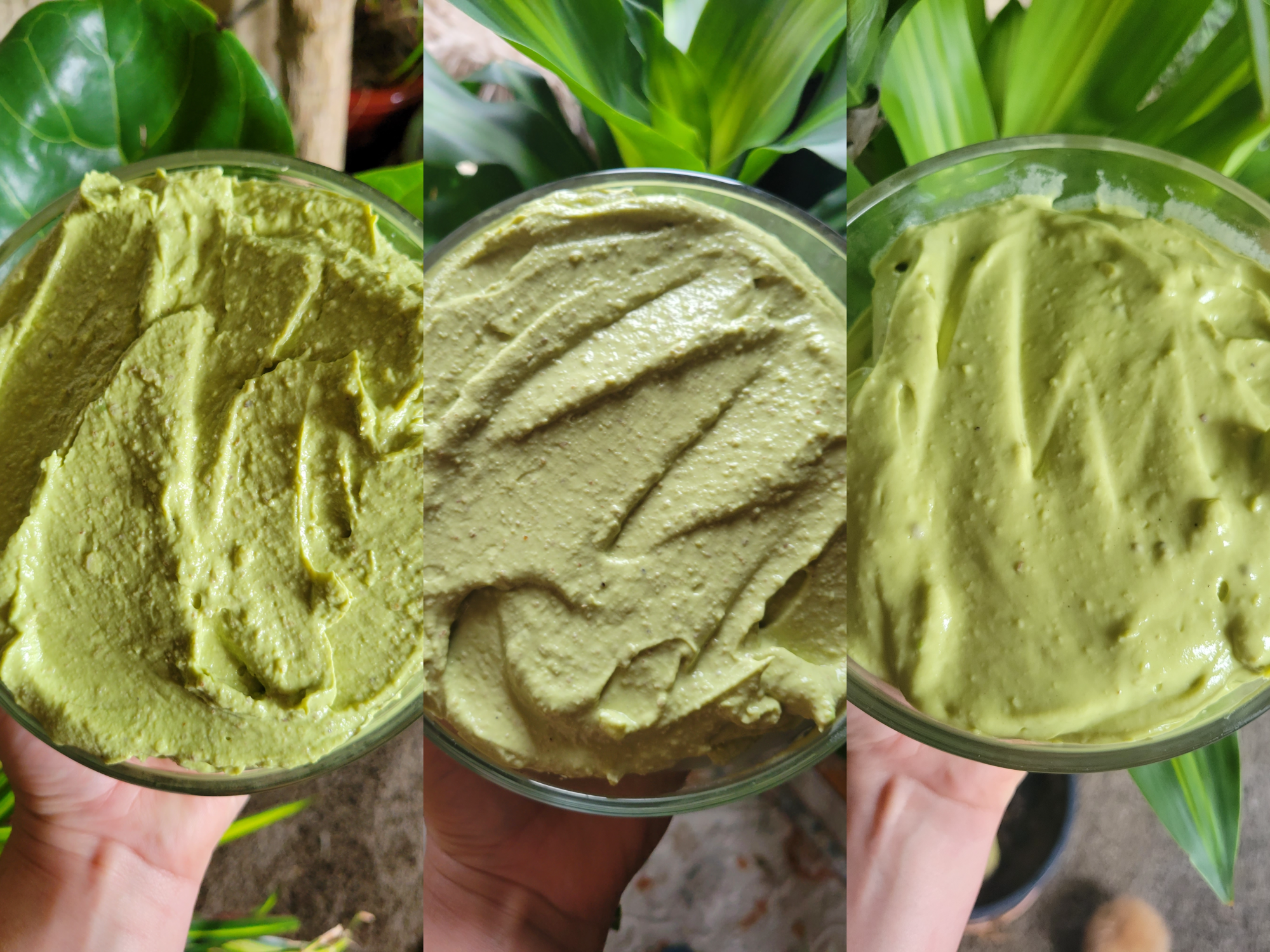

Leave a Reply